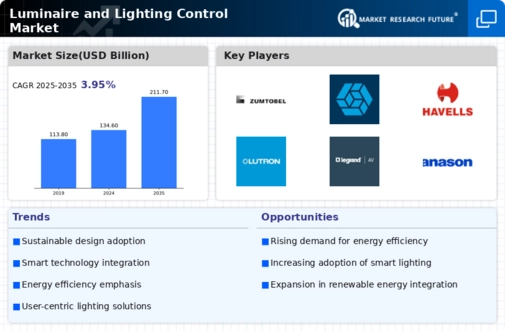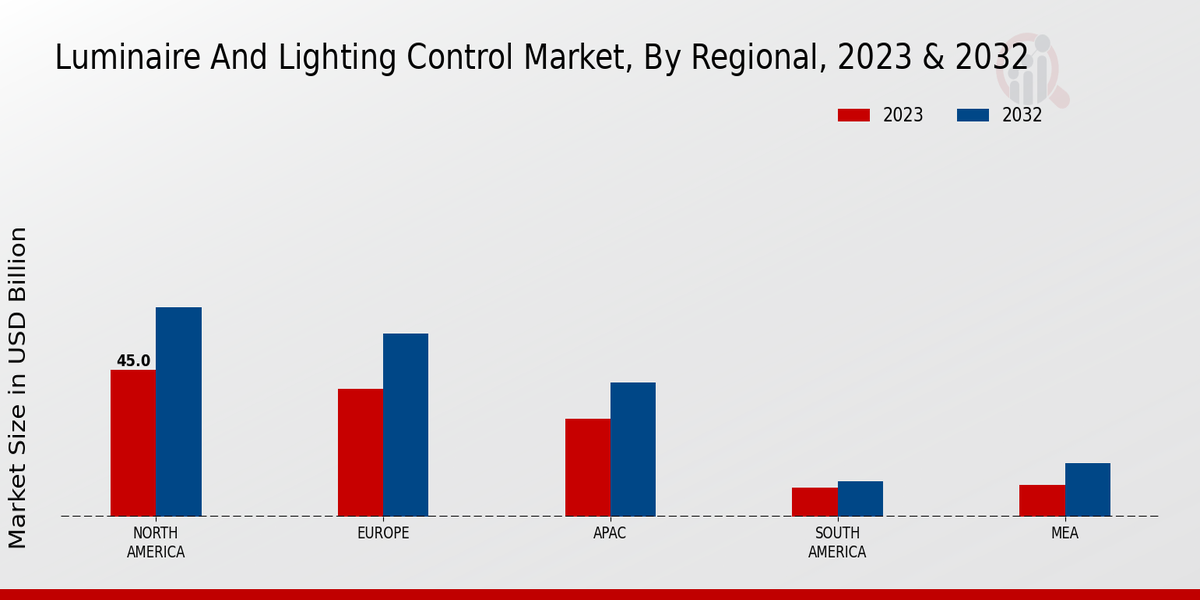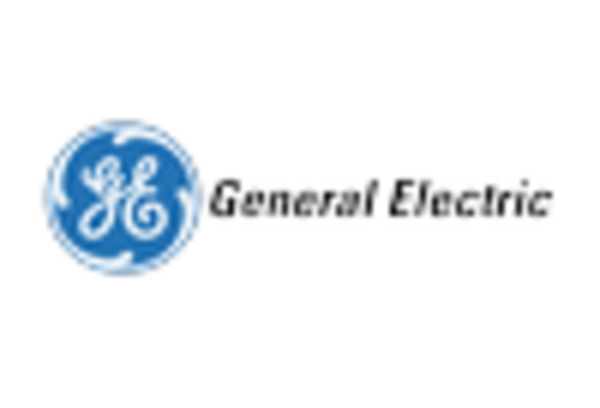Regulatory Support for Sustainable Lighting
Regulatory frameworks promoting sustainability are significantly influencing the Luminaire and Lighting Control Market. Governments worldwide are implementing stringent regulations aimed at reducing carbon footprints and promoting energy-efficient technologies. Initiatives such as tax incentives for energy-efficient upgrades and mandatory energy performance standards are encouraging consumers to adopt advanced lighting solutions. For instance, regulations that phase out incandescent bulbs in favor of more efficient alternatives are driving the market towards LED and other sustainable lighting technologies. This regulatory support not only fosters innovation within the Luminaire and Lighting Control Market but also aligns with broader environmental goals, potentially leading to increased market growth.
Growing Demand for Energy-Efficient Solutions
The increasing emphasis on energy efficiency is a pivotal driver for the Luminaire and Lighting Control Market. As energy costs continue to rise, consumers and businesses alike are seeking solutions that reduce energy consumption. The market for energy-efficient lighting, including LED technology, has expanded considerably, with LEDs accounting for a substantial share of the lighting market. Reports suggest that The Luminaire and Lighting Control is expected to reach several billion dollars by 2026, reflecting a robust demand for energy-efficient lighting solutions. This trend not only supports sustainability goals but also enhances the overall appeal of the Luminaire and Lighting Control Market, as energy-efficient products often come with longer lifespans and lower maintenance costs.
Technological Advancements in Lighting Control
The Luminaire and Lighting Control Market is experiencing a surge in technological advancements, particularly with the integration of smart technologies. Innovations such as IoT-enabled lighting systems and advanced sensors are transforming traditional lighting into intelligent solutions. These technologies allow for real-time monitoring and control, enhancing energy efficiency and user experience. According to recent data, the adoption of smart lighting solutions is projected to grow at a compound annual growth rate of over 20% in the coming years. This trend indicates a shift towards more automated and responsive lighting systems, which could significantly impact the Luminaire and Lighting Control Market by driving demand for sophisticated lighting control solutions.
Rising Urbanization and Infrastructure Development
Urbanization is a critical factor propelling the Luminaire and Lighting Control Market. As urban areas expand, the demand for effective and efficient lighting solutions in public spaces, commercial buildings, and residential areas is escalating. Infrastructure development projects often incorporate advanced lighting systems to enhance safety and aesthetics. The market is witnessing a notable increase in investments in smart city initiatives, which prioritize intelligent lighting solutions. This trend is expected to drive the Luminaire and Lighting Control Market, as cities seek to implement integrated lighting systems that improve energy management and reduce operational costs. The potential for growth in this sector appears substantial, given the ongoing urban development worldwide.
Consumer Preference for Customizable Lighting Solutions
The shift in consumer preferences towards customizable lighting solutions is reshaping the Luminaire and Lighting Control Market. Modern consumers increasingly seek personalized experiences in their living and working environments, leading to a demand for lighting systems that can be tailored to individual needs. This trend is evident in the rise of tunable white and color-changing LED technologies, which allow users to adjust lighting according to mood or activity. Market data indicates that the segment for customizable lighting solutions is expected to grow significantly, reflecting a broader trend towards personalization in home and office design. This consumer-driven demand is likely to enhance the appeal of the Luminaire and Lighting Control Market, fostering innovation and product diversity.

















Leave a Comment